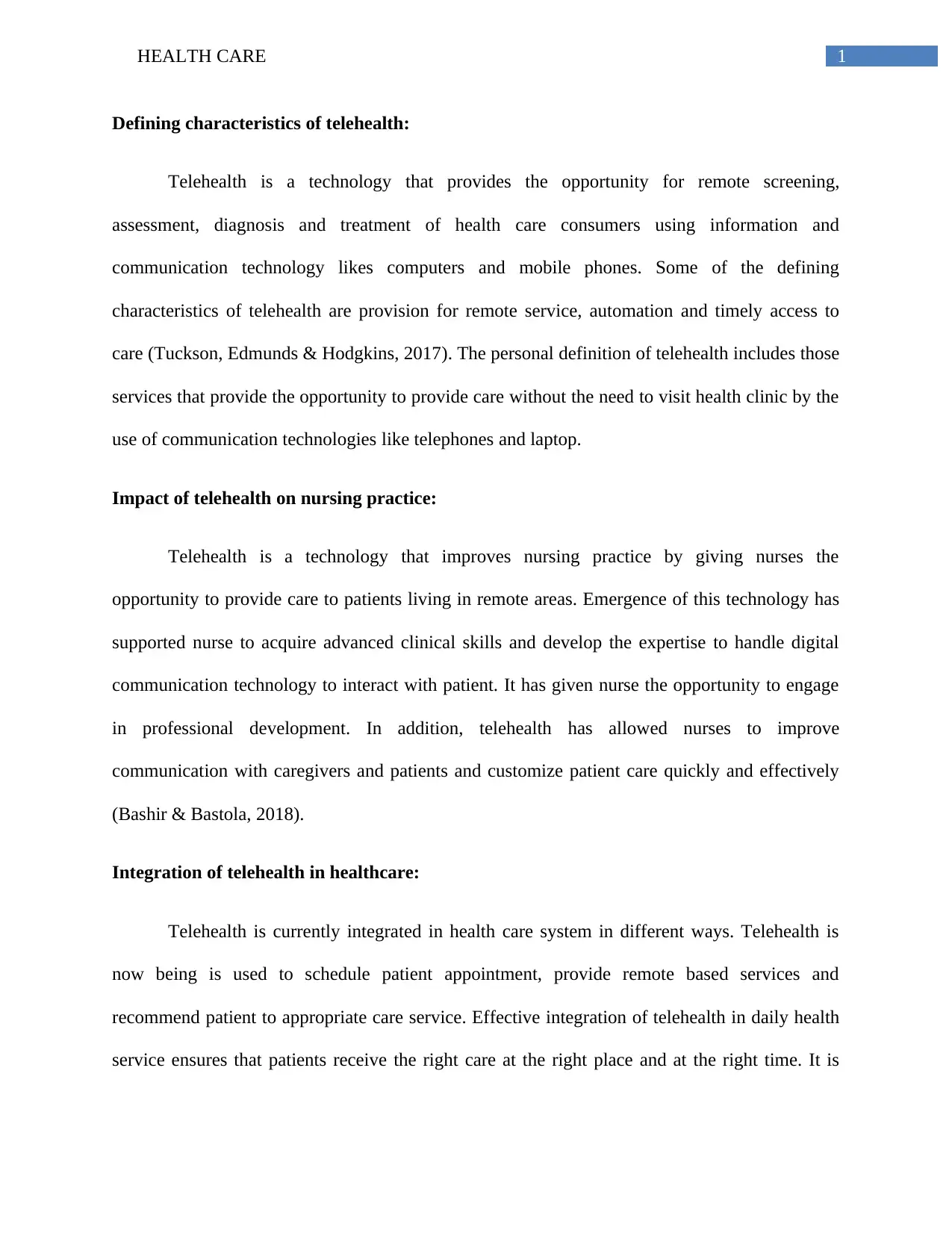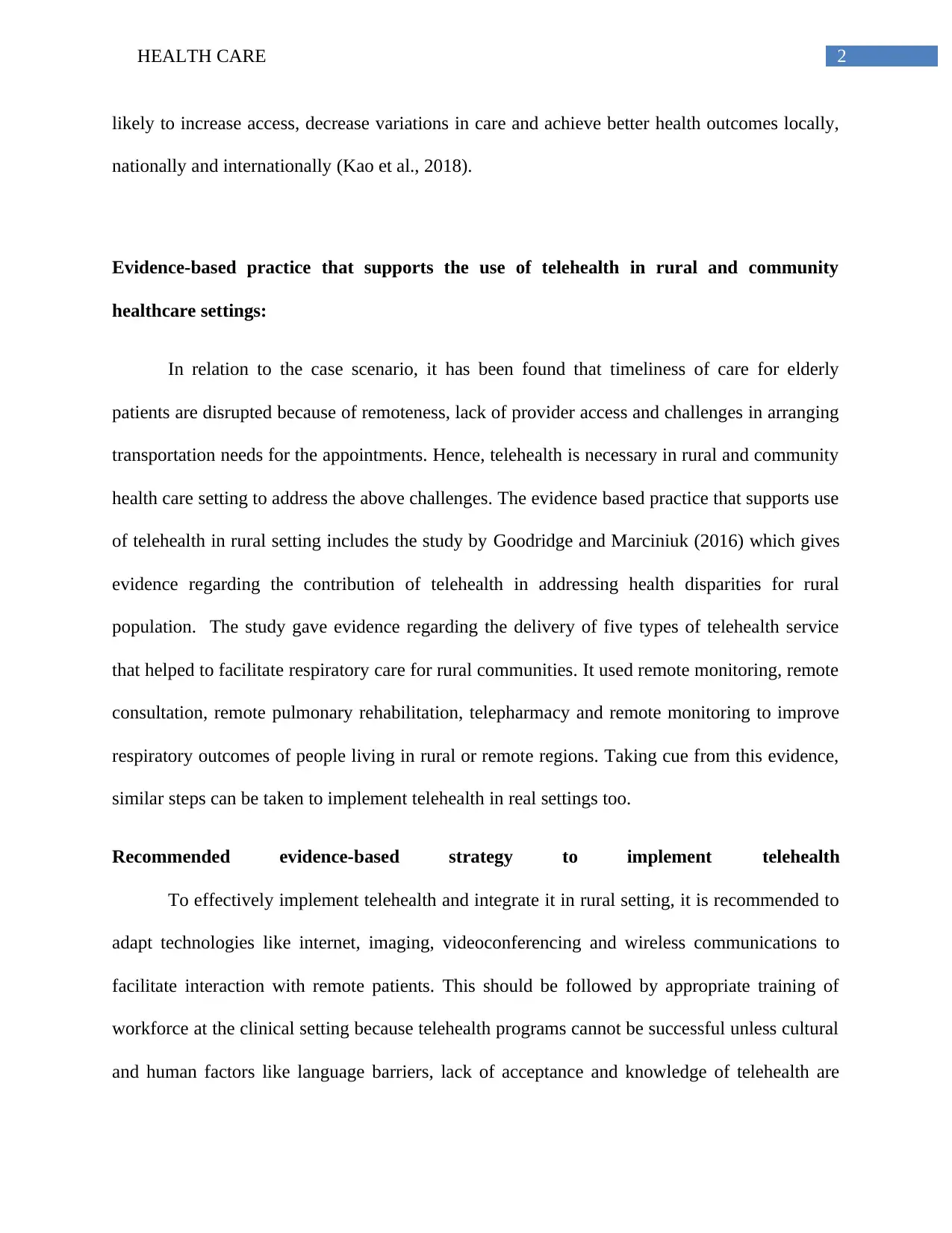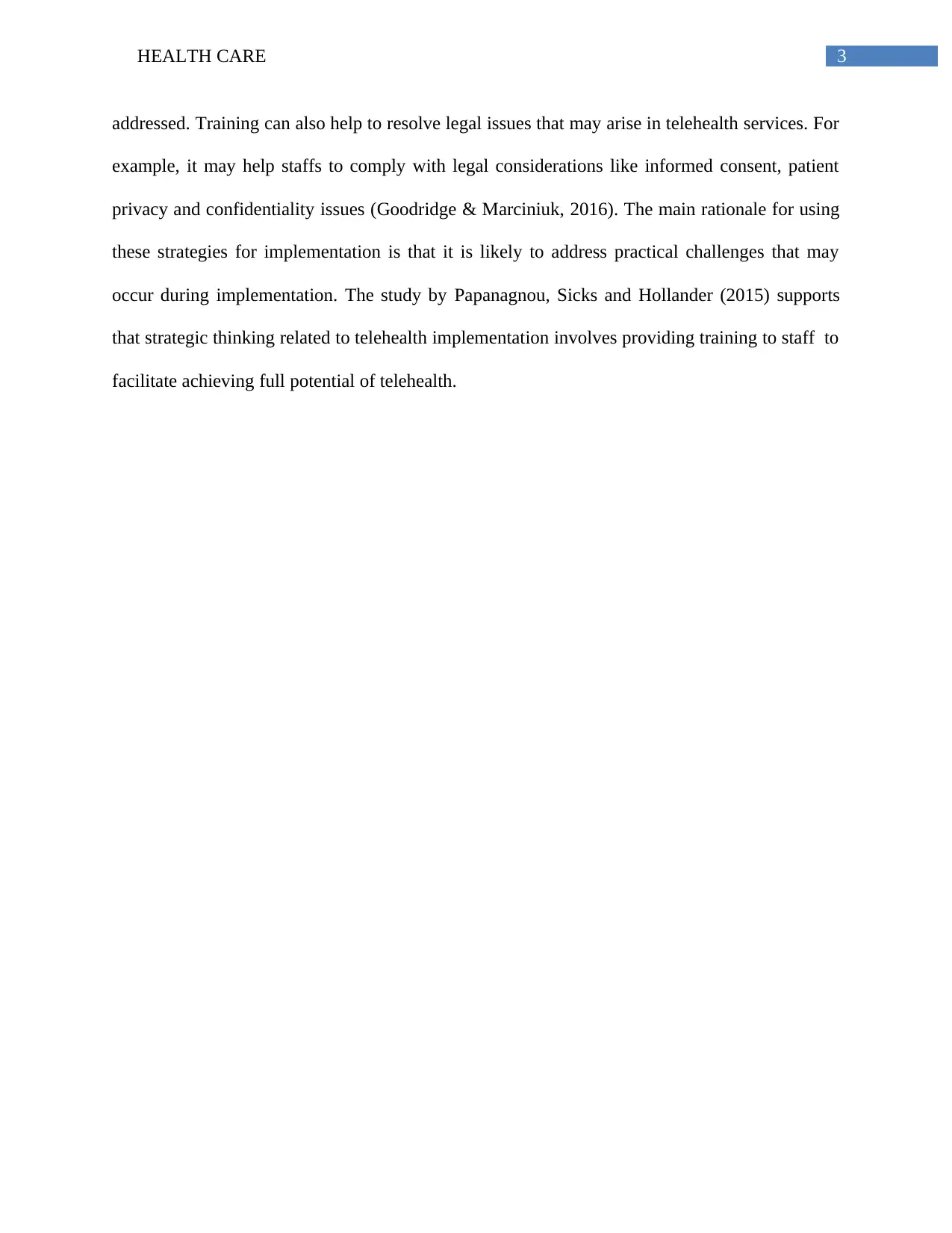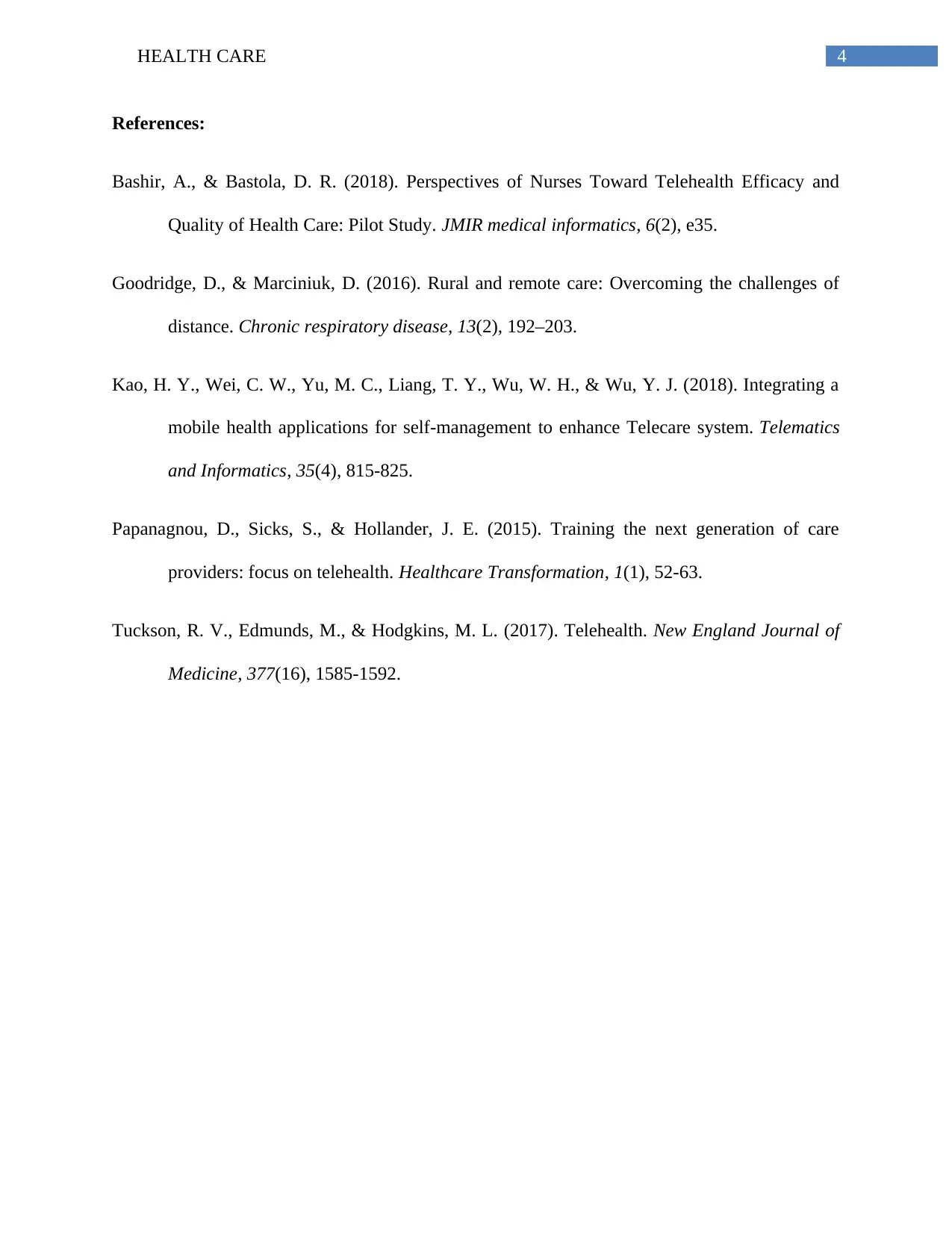Impact of Telehealth on Healthcare Delivery: Comprehensive Report
VerifiedAdded on 2022/11/02
|5
|878
|103
Report
AI Summary
This report provides a comprehensive overview of telehealth, defining its key characteristics as remote service provision, automation, and timely access to care. It explores the impact of telehealth on nursing practice, highlighting its ability to improve care for remote patients, enhance nurses' skills, and facilitate communication. The report examines the integration of telehealth in healthcare systems, emphasizing its role in scheduling appointments, providing remote services, and improving patient outcomes. It presents evidence-based practices supporting telehealth in rural and community healthcare, including studies on addressing health disparities and delivering various telehealth services. The report recommends strategies for effective telehealth implementation, such as utilizing technologies like video conferencing and providing workforce training to address challenges like language barriers and legal issues. The rationale for these strategies is to overcome practical challenges and maximize the potential of telehealth in healthcare delivery.
1 out of 5












![[object Object]](/_next/static/media/star-bottom.7253800d.svg)